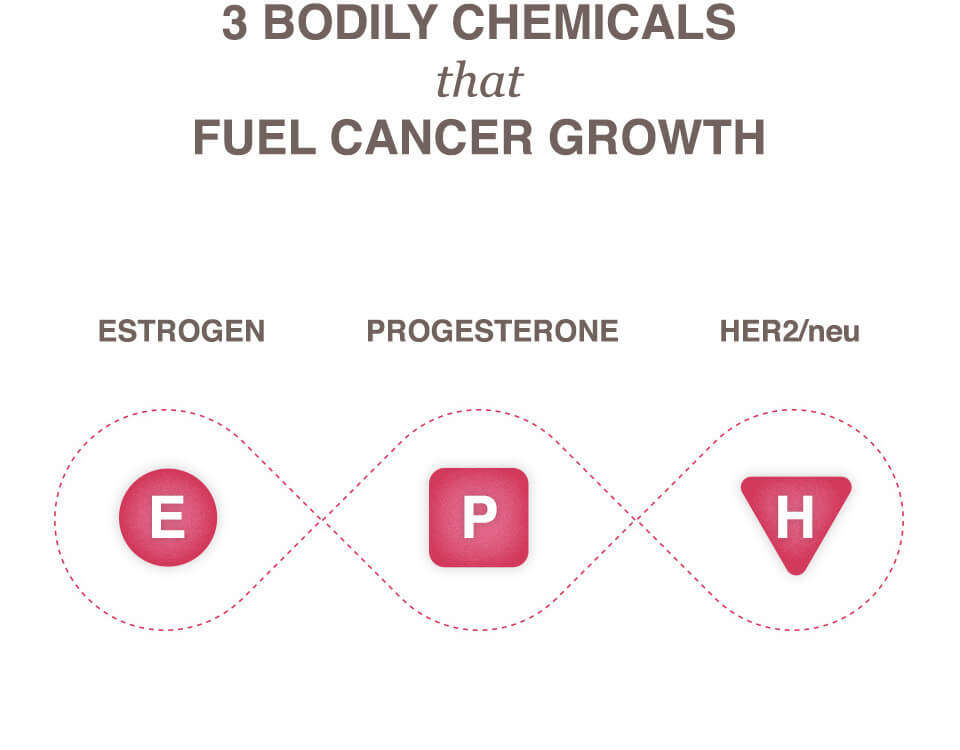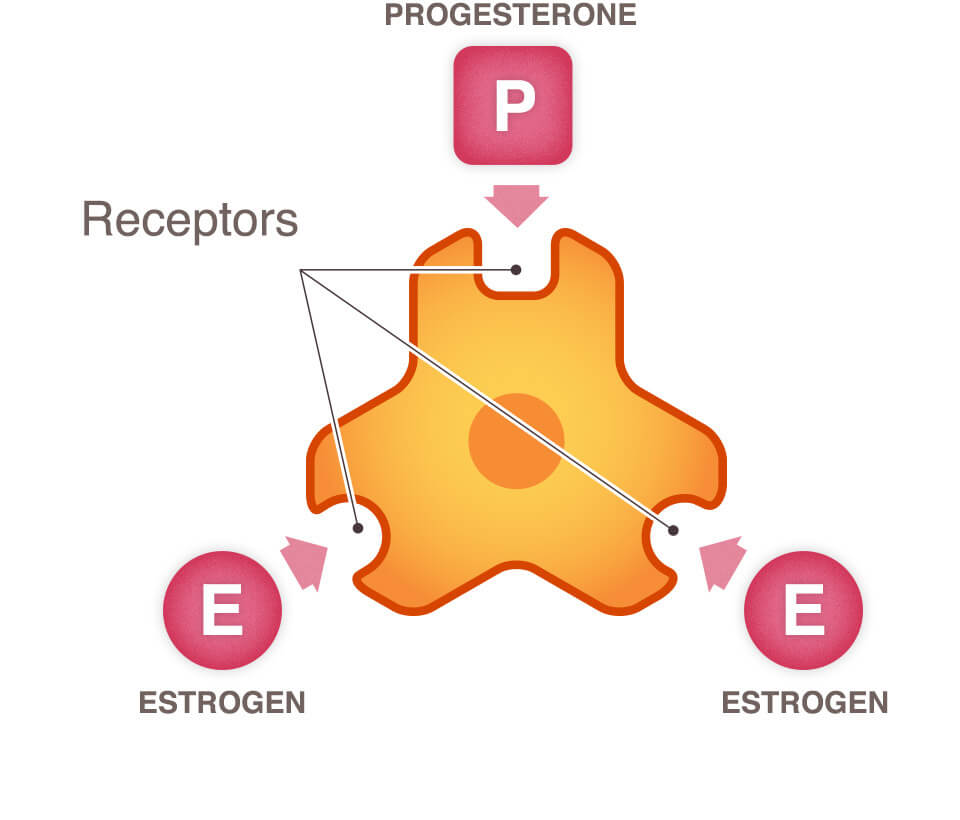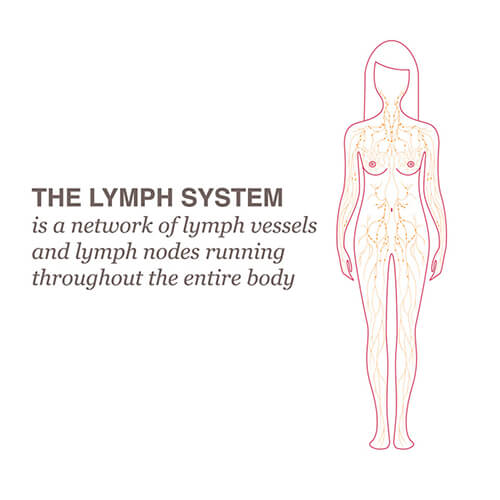Growth of Breast Cancer
What Causes Breast Cancer Growth?
There is much that we know and much that we have yet to understand. However, we do know that cancer spreads in three important ways:
- Damaged cells replicate, creating more damaged cells and tumor growth.
- Our body’s hormones and chemicals can accelerate the growth of some tumors.
- Lymph and blood vessels can carry the cancer to others areas of the body, and lymph node examination can help pinpoint the progression of the disease.
Damaged Cells

Healthy cells are the basic building blocks of all tissue and organs in the body. But when cell DNA (the cell’s wiring) is damaged, mutated cells begin to rapidly reproduce without following the pre-wired plan. Aggressive cell growth can form a tumor (or mass of tissue) that does not function as originally intended. These abnormal cells or groups of cells can progress into the disease known as breast cancer and can spread to other parts of the body.
Accelerated Growth
The growth and spread of breast cancer can be difficult to grasp because cancer cell growth is often fueled by normally healthy chemicals of the body, like estrogen, progesterone, and the HER2/neu gene (a growth hormone). Although each of these three bodily chemicals can serve an important healthy function, when a cell becomes cancerous these chemicals can accelerate the growth of breast cancer tumors. These are known as prognostic factors of the breast cancer cells.

Healthy HER2 receptors are the proteins that help manage how a breast cell grows, divides, and repairs itself. However, in about a quarter of all breast cancer patients, the HER2 gene isn’t functioning properly. It makes an excess number of copies of itself in a process known as “HER2 gene amplification.” Then these extra genes instruct the cells to make too many HER2 receptors, which is called “HER2 protein overexpression.” The ultimate result is that breast cells grow and divide in an uncontrolled fashion.
Cancer Receptors

Think of a receptor as a mouth. When open, cancer cells can feed and grow. When blocked off or closed, the same cells begin to starve.
By identifying the cancer’s unique receptors, your doctor can recommend effective treatment methods to block the receptors. Remember, inhibiting the cancer’s “food supply” works to restrict the cancer’s growth. Ideally, your treatment plan will stop the cancer growth before it spreads through the lymph system and on to other tissue and organs in the body.
The Lymph System
The lymph system, which is part of the immune system, is a network of lymph vessels and lymph nodes running throughout the entire body. Similar to how the blood circulatory system distributes elements throughout the body, the lymph system transports disease-fighting cells and fluids. Clusters of bean-shaped lymph nodes are fixed in areas throughout the lymph system; they act as filters by carrying abnormal cells away from healthy tissue.

The lymph system, which is part of the immune system, is a network of lymph vessels and lymph nodes running throughout the entire body. Similar to how the blood circulatory system distributes elements throughout the body, the lymph system transports disease-fighting cells and fluids. Clusters of bean-shaped lymph nodes are fixed in areas throughout the lymph system; they act as filters by carrying abnormal cells away from healthy tissue.
The type of breast cancer is generally determined by the origin of the growth of cancer cells, which is almost always in the lobes, lobules, or ducts. When cancer is found in the nearby lymph nodes, it helps doctors identify just how far the cancer has spread. If the nearest nodes contain cancer, additional nodes are usually examined for the presence or absence of cancer cells to understand how far the disease has progressed.
There are situations in which the bloodstream transports breast cancer cells from the breast to other parts of the body as well. The pathologist looks closely at the breast cancer cells to see if there is angio invasion, meaning blood vessels running through the tumor, and/or lymphatic invasion, meaning lymphatic vessels running through the tumor. When present, there is an increased risk of the cancer being able to spread to other parts of the body.



